

Unlike Sapphire's heavyweight RX Vega64 Nitro+, the Gigabyte RX Vega56 Gaming OC is more of a grey mouse with a fairly healthy body measure index. Just don't stand out at all costs. And it almost seems as if you even have it consciously ... Board layout
Gigabyte is extremely different from AMD's reference layout of the RX Vega, which should also make the use of existing full-cover water coolers impossible. Also at the popular Raijintek Morpheus, end terrain is, if you ... Sometimes you get the feeling that Nvidia's engineers also held one or the other PVT sample of a Custom RX Vega56 in their hands when the GeForce GTX 1070 Ti was launched. Or at least some spy infiltrated. Good, snare... Power consumption at different loads
The power consumption in the gaming loop is at the measured approx. 264 watts in balanced mode far above what is still with approx. measured 223 watts in the default BIOS. You're even lying with it ... Overclocking and undervolting
The conventional overclocking by means of an even higher power limit and more clock speed can be quickly forgotten. We will see why this is the case in the cooling section. So crowbar is not possible. Anyway... Cooling system and backplate
Of course, the generated waste heat is directly related to the recorded power, for which the cooling solution is responsible for optimum dissipation. And this is precisely where we are faced with various compromises, which are... Summary
The Gigabyte RX Vega56 Gaming OC leaves the impression in many respects of a rather reluctantly completed compulsory exercise, but in which one has concentrated on the most important things, so as not to smother anything. All...
Power consumption at different loads
The power consumption in the gaming loop is at the measured approx. 264 watts in balanced mode far above what is still with approx. measured 223 watts in the default BIOS. This means that the reference map came in at just under 260 watts.
The turbo mode with a 50% higher power limit then shoots far beyond the 325 watt mark, whereby the cooler is almost helplessly overwhelmed. For this reason, we have also dispensed with overclocking in the further course and only use the balanced mode without additional surcharges.
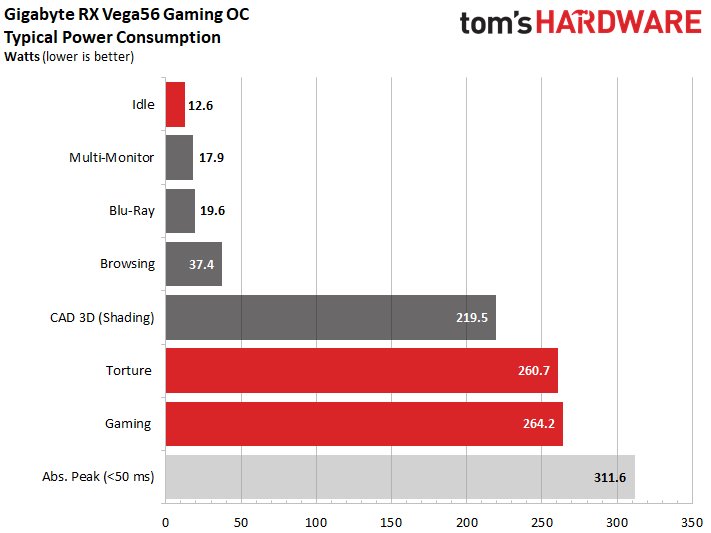
The corresponding voltages for both loops in the factory state are shown in the following diagram:
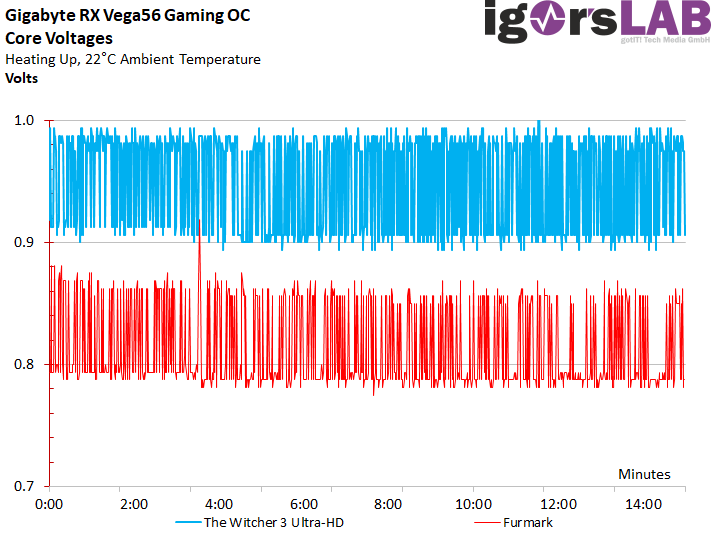
Compliance with the standard on the motherboard slot
With a maximum of 2.1 amps (torture), the card is well below half of what the PCI SIG sets with a maximum of 5.5 amps (66 watts) for the 12 volt rail on the motherboard slot. In the Gaming Loop, with only 1.6 amperes, one is much further below overall, the balancing has been implemented very exemplary and the motherboard lot is hardly seriously burdened.
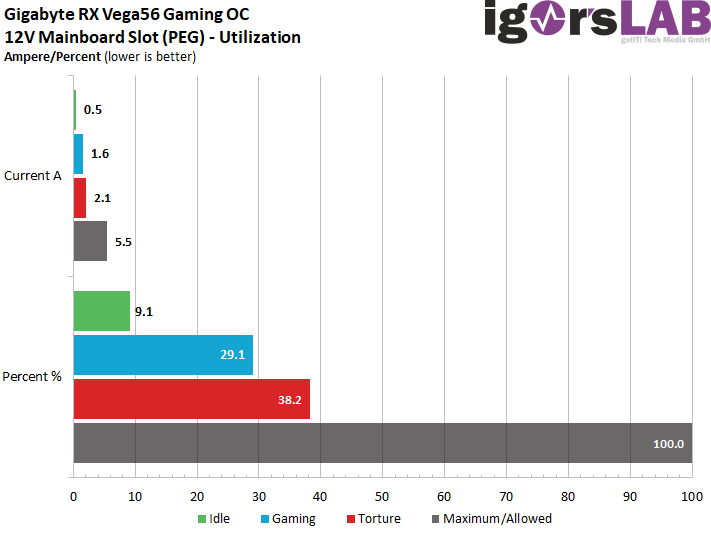
Detailed graphics: power consumption and currents
For better illustration, we have also recorded all measurement results as detailed curves in the graphs below. Naturally, the power consumption peaks in gaming are the most important. With peaks of up to 312 watts, however, you can live well, because they occur only very briefly.
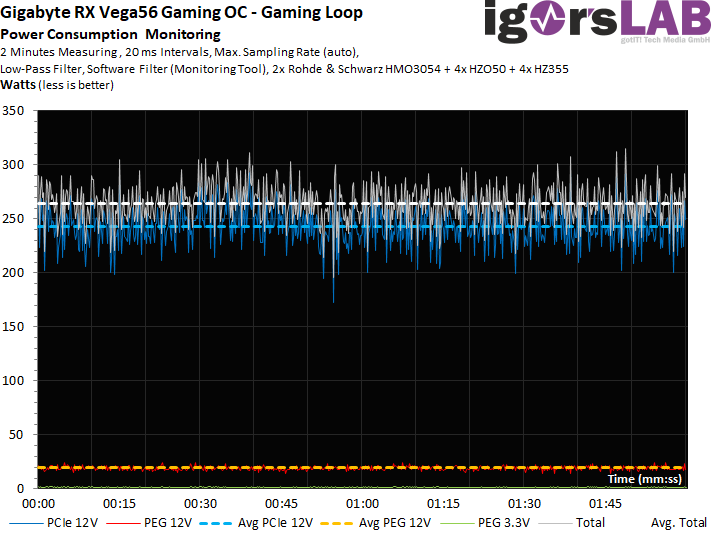
The flowing currents behave in an equivalent way:
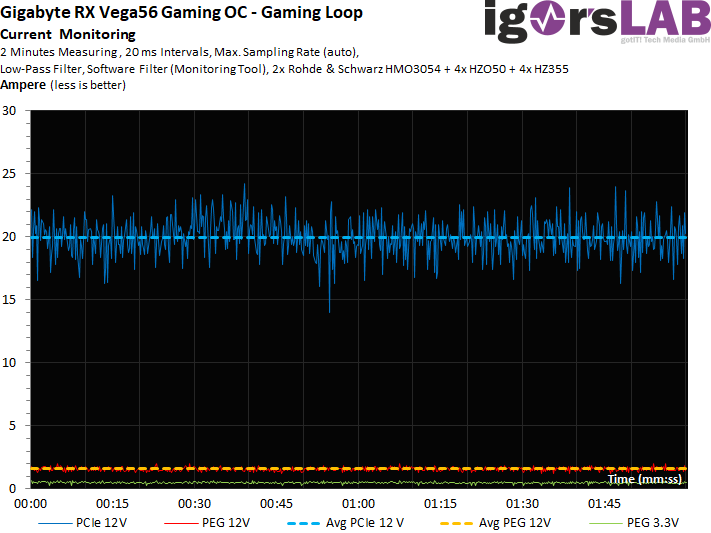
In the stress test, the short-term peaks are significantly lower, even if the power consumption is again slightly higher than for gaming.
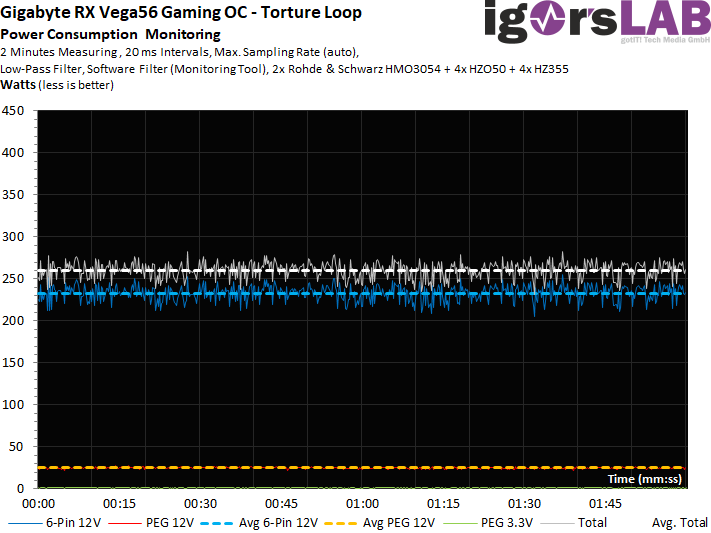
Even now, the flowing currents follow the curve and show no abnormalities.
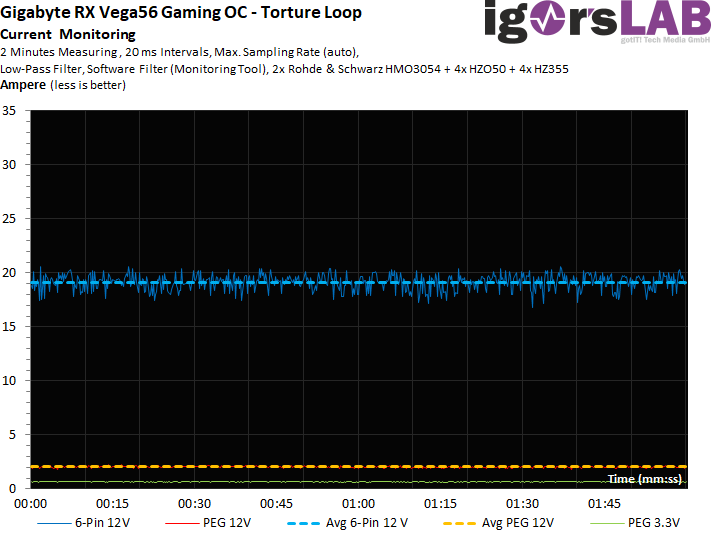







































Kommentieren